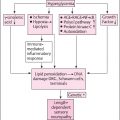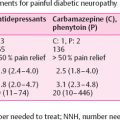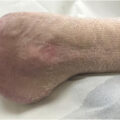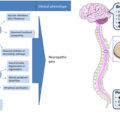Background
Chronic diseases are the main cause of mortality and morbidity among older people. In fact, it is estimated that 80% of the older population has at least one chronic disease. The most functionally limiting conditions in the population over 65 years of age are, among others, type 2 diabetes mellitus (T2DM), cardiovascular disease, or chronic obstructive pulmonary disease (COPD), and some degenerative diseases, such as dementia. Due to population aging, longevity, and an increase in unhealthy behaviors, which might lead to additional health problems (e.g., high cholesterol, obesity, or hypertension), the prevalence of older people with some chronic disease has increased markedly in recent decades. In fact, in 2016, noncommunicable diseases, including the main chronic diseases, were shown to be responsible for approximately 82% of the disease burden, measured in disability-adjusted life years . These figures have their direct translation in terms of economic impact, since it is estimated that 80% of resources are devoted to the treatment and prevention of chronic diseases, with the distribution of spending being concentrated in a small percentage of the population, mostly older people (approximately 5% of the population consumes about 30% of the resources). Particularly to the case of diabetes, developing countries spend nearly 40% of their healthcare expenditure on people with diabetes, whereas in developed countries, such disease-related expenditure accounts for approximately 12%–15% of national healthcare spending .
One of those chronic diseases that pose a great burden on its sufferers is T2DM, which is especially relevant given the high prevalence of T2DM among total diabetes cases and the effect of aging on its prevalence. Older people represent around half of the people with diabetes and diabetes prevalence reaches one in every four older adults 65 years old and above . Furthermore, diabetes is one of the largest factors increasing the risk of mortality, morbidity, and disability over the world and its economic burden demands new ways to curb diabetes healthcare expenditure .
Diabetic peripheral neuropathy (DPN) is a frequent long-term diabetes-related complication, which consists of nerve damage in hands and feet and it may also affect other internal organs such as heart and bladder . Similarly, DPN affects up to 50% of people with diabetes , with chronic painful neuropathy affecting up to 26%, leading to an increasing risk of foot ulceration and subsequent amputation . More than one in two-foot ulcers is expected to become infected, raising the risk of hospitalization, amputation, and mortality . A diabetic foot ulcer (DFU) precedes 85% of nontraumatic lower limb amputations . While diabetes itself doubles the rate of mortality by all causes as compared to people without diabetes, foot ulceration imposes an even higher morbidity .
Due to such issues related to diabetes’ complications, improving screening and earlier identification of patients at risk of developing the DPN might offer an excellent opportunity for patients with diabetes. First of all, the majority of people with diabetes might not be aware of suffering DPN since around 50%–85% of cases are asymptomatic . Moreover, the current practice barely focuses on early detection of DPN, maybe due to complications related to the diagnosis. Furthermore, if, due to lack of early diagnosis, people with diabetes and at high risk of developing neuropathy first present with an ulcer, the annual cost of treating these patients would be in the range of additional £29–116 million in case of the United Kingdom . Furthermore, screening would also imply behavioral changes to reduce the risk of unperceived trauma and identify those patients who should undergo more intense intervention including improved glycemic, blood pressure, and lipid control and, if at particularly high risk, referral to multidisciplinary foot care teams .
Early detection might also play a relevant role with respect to the health-related quality of life (HRQoL) on people with diabetes additionally suffering of DPN. In fact, the negative association between DPN and HRQoL has been supported by several studies , highlighting the relevance of such relationship in case of painful DPN. Moreover, it has been supported that quality of life in people with current ulcers and for those with major amputations is lower than for individuals with other long-term diseases such as COPD or renal disease .
In addition to causing pain and morbidity, foot lesions among people with diabetes have substantial economic consequences. The cost of diabetic foot lesions is, in fact, affected by several interventions such as foot ulcers prevention programs, management strategies to heal ulcers, which shorten wound healing time and prevent amputation, and by the appropriate management and care for disability after amputations . The following two sections aim to provide with a general picture that diabetic foot poses on national healthcare budgets, especially in European countries (section entitled “Cost-of-illness studies on diabetic foot disease”), but also to facilitate the readers with some interventions that have been assessed in the existing literature and pursue to improve diabetic foot care, prevention, and diagnosis (section named “Cost-effectiveness and cost-utility of diabetic foot disease-related interventions”).
Cost-of-illness studies on diabetic foot disease
Having been widely used in the existing literature of health economics, the aim of cost-of-illness studies is to provide with an estimation of the economic burden that a certain disease poses on the society as a whole . The advantages of cost-of-illness studies could be summarized in three points: (1) they can serve as an argument to inform policies regarding a specific disease, as well as its related complications ; (2) they might be helpful in identifying target populations that may be subject to specific health problems or policies ; and (3) the results derived from this type of studies could be used to determine the efficacy of any health intervention aimed at reducing or eliminating, if possible, the economic effects of a disease or condition .
As it has been mentioned in the introduction section, in addition to the poorer quality of life, mortality, and morbidity associated with diabetes-related complications, diabetic foot also has adverse consequences on healthcare system and its sustainability, being projected to reach $15–22 billion annually by the year 2024 in the United States in case of wound care products . The cost of care for people with diabetes and a foot ulcer poses a greater economic burden compared with the management of a person with diabetes but with no foot ulceration. Economic disparities (i.e., insurance coverage, type of healthcare provider) may play an escalating role because the reimbursement of foot ulcer treatments, especially when chronic, might not be covered by third-party payers. Healthcare use might endorse not only the immediate costs related to foot ulcer, chronic wounds, and eventual amputation procedures–related costs, such as inpatient costs, surgery, drugs, and dressings, but also long-term foot ulcer care costs. Once an ulcer occurs, higher costs are projected to be incurred over the following 2–3 years, compared with people with diabetes but without foot ulcers , although the literature has showed that there seemed to be a tendency toward the nonulcer group after 2 years too, but still higher . However, if amputation surgery had to be made, healthcare costs do not differ that much between people with diabetes and without in the short-term (healthcare costs 24 weeks after lower extremity amputation: €36,686 in people with diabetes vs €35,858 if nondiabetic), whereas they are substantially different after 3 years since amputation (€115,676 if the person had diabetes vs €92,862 if not) , pointing toward the relevance of the severity of the prognosis of DFUs.
When such higher healthcare use is translated into monetary terms, even though huge heterogeneity of foot complications and geographic variations existed, substantial costs and further healthcare burden for people with diabetes were found, regardless of the countries analyzed, being amputation procedures the greatest component contributing to higher healthcare costs. A recent review showed that the cost of amputation ranged between $35,000 and $45,000, per year, in the developed countries, highlighting the fact that the cost of amputation in the United States is generally higher than in European countries . Another more recent review showed that the burden of DFUs in European countries was estimated to reach $13,561 annually per person with diabetes, containing both direct and indirect costs , which became even higher if amputation procedures were introduced. For example, in Sweden, the healthcare expenditures incurred per each healed DFU without amputation were nearly $24,965, whereas in case of minor and major amputation surgeries, those costs increased to $47,518 and $42,858, respectively . In case of the English National Health Service (NHS), Guest et al. showed, using data from 130 patients with a newly diagnosed DFU, that the average DFU care costs significantly varied depending on disease severity: for example, the average cost over a 12-month period of a healed ulcer, unhealed ulcer, and amputated wound was, respectively, £2140, £8800, and £16,900 .
Our review of cost-of-illness studies performed in a European setting related to diabetic foot revealed the relevant economic burden that diabetic foot presents for several national health services, with even higher figures in terms of percentage attributed to diabetic foot care within the NHS healthcare expenditure for England. The study performed by Kerr et al. in 2014 showed that the healthcare costs due to diabetic foot care represented 0.4% of the total NHS healthcare budget; however, only 5 years later, in 2019, the same authors concluded that diabetic foot care related expenses had already doubled, representing 0.8%–0.9% of the NHS budget . In case of the Danish healthcare system, wound care represented an even higher proportion of the national healthcare budget, between 1.5% and 2.4% , depending on the hospital assessed.
When healthcare costs per person with diabetic foot problems, the studies identified provided with a wide range of figures, which varied from $14,288 per year in Turkey to $1727 in case of Wales. Differences might be due to methodology issues, as in case of the Turkish estimation, the authors simulated the data, but included lots of healthcare use components (outpatient care, imaging costs, laboratory tests, drugs, medical materials, hospital admission, complication costs, intervention, rehabilitation, and trainings), while the Welsh authors used real data from 78,090 subjects with chronic wounds, but only considered primary and secondary care consultations. Closer estimations were observed between the Turkish and Spanish study with respect to hospitalization costs due to diabetic foot since both works estimated an average cost per hospital admission episode of around €7500.
A synopsis of the studies evaluating the costs of diabetic foot is reported in Table 13.1 .
| First author name and year of publication | Country | Study population | Costs included | Results |
|---|---|---|---|---|
| Kerr, 2019 | England | Patient-level datasets at a national and local level | Healthcare costs (ulceration care, outpatient and primary care costs, inpatient admissions) | Total cost to the NHS: £837–962 million (0.8%–0.9%) of the NHS budget for England |
| Guest, 2018 | United Kingdom | 130 patients with a newly diagnosed DFU in THIN dataset | Healthcare costs (specialist physicians, podiatrists, nurses’ visits, pressure-offloading device, amputation procedures) | Average NHS cost of wound care: £7800 per DFU over 12 months |
| Average NHS cost per healed ulcer: £2140 | ||||
| Average NHS cost per unhealed ulcer: £8800 | ||||
| Average NHS cost per amputated wound: £16,900 | ||||
| Nieto-Gil, 2018 | Spain | 2700 hospital admissions from the year 2009–13 | Healthcare costs (hospital admission costs, including amputation procedures) | Average cost per hospitalization: €7633 |
| Oksuz, 2016 | Turkey | Simulated data | Healthcare costs (outpatient care, imaging costs, laboratory tests, drugs, medical materials, hospital admission, complication costs, intervention, rehabilitation, and trainings) | Average annual per patient cost with a diabetic foot ulcer: $14,287.70 |
| Mean intervention, rehabilitation, and trainings costs: $2291.7 | ||||
| Mean drugs costs: $2545.8 | ||||
| Mean hospital admission costs: $7357.4 | ||||
| Philipps, 2016 | Wales | 78,090 subjects with chronic wounds | Healthcare costs (primary and secondary care consultations, including postoperative care) | Total cost of chronic wounds care: £328.8 million (5% of total expenditure on NHS in Wales) |
| Average cost per patient: £1727 | ||||
| Ignatyeva, 2015 | Russia | Medical records from the Diabetic Foot Department of the Endocrinology Scientific Center | Healthcare costs (hospital admission, surgery, ulcer treatment) | Mean treatment cost was €3051 per patient with diabetic foot ulcer (per hospital episode) |
| Søndergaard, 2015 | Denmark | 48 patients with a diabetic foot ulcer | Healthcare costs (hospital admission due to surgery and readmission costs) | Median cost per case: 133,867 DKK |
| Kerr, 2014 | England | National datasets | Healthcare costs (hospitalization costs, ulceration care, inpatient care) | Total cost of diabetic foot care: £580 million (0.6% of NHS expenditure) |
| Ulceration care: £307 million | ||||
| Inpatient care: £219 million | ||||
| Amputation care: £55 million | ||||
| Gottrup, 2013 | Denmark | 830 patients with a wound | Healthcare costs only (inpatient and outpatient visits, dressing changes costs) | Total annual costs: €232,458–3.6 million, depending on the hospital, accounting for 1.5%–2.4% of the total annual budgets |
| Hoffmann, 2013 | Germany | 444 patients with LEA | Healthcare costs (hospitalization, rehabilitation, outpatient care, outpatient drug prescriptions, nonphysician services, durable medical equipment, and long-term care) | Costs 24 weeks after LEA: €36,686 in people with diabetes vs €35,858 if nondiabetic |
| Costs 3 years after LEA: were €115,676 if the person had diabetes vs €92,862 if not | ||||
| McInnes, 2012 | United Kingdom | National Diabetes Audit 2011 data | Healthcare costs (hospital admission costs and diabetic foot complications-related costs) | Foot ulcers and amputations related costs: £985,600,282 |
Stay updated, free articles. Join our Telegram channel

Full access? Get Clinical Tree








